The Fantasy Genre has long been dominated by the religions and customs of countries touched on by the Crusades. While this makes sense, with the familiar image of a knight wandering foreign lands being key to the genre itself, there has been stagnation in recent times. As such, I’ve taken it upon myself to look into the cultures of the world and find fascinating details about other mythologies often overlooked by the genre we so love, going on a bit of a tour of world mythologies.
During the quest for some interesting details, going through West Africa, it’s become clear that many major patterns begin to form. Almost all of the West African cultures have a single supreme deity which is supported by lesser spirits. Often times this deity will have a love/hate relationship with the people who worship them, but will (usually) have a soft spot for the people they’ve created. Generally, the idea is that God loves us but is a little disappointed with our life choices.

But outside of the general similarity of all the supreme deities, the differences between the West African cultures stem primarily from how they interact with that God. In some cultures there is a need for houses of worship, in others it’s a matter of self-improvement, and for others still it requires violent retribution. But what is known in almost all cases is that, even in their attempts to appease or communicate with their deity, they cannot do it directly. God is unknowable, untouchable, and beyond human contact without an intermediary. And, in the case of one culture…that requires a great deal of reverence for trees.
The Serer Religion
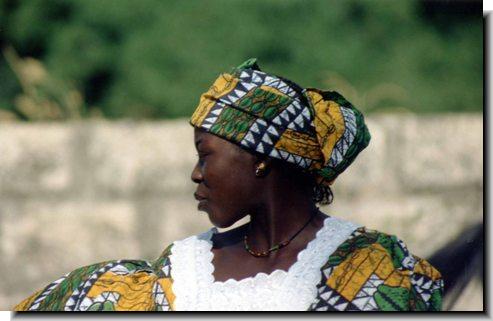 Today overshadowed by Islam in the modern country of Senegal, the Serer religion was once the dominant form of worship in the Senegal and Gambia region as the binding belief that united the ethnoreligious group of the Serer people. Consisting of many smaller subgroups featuring variations on language, customs, and interpretations of shared stories, the Serer people were united primarily by a shared history as parts of the Kingdom of Sine, their ruling caste the Lamane, and the religion the Lamane kept – Serer.
Today overshadowed by Islam in the modern country of Senegal, the Serer religion was once the dominant form of worship in the Senegal and Gambia region as the binding belief that united the ethnoreligious group of the Serer people. Consisting of many smaller subgroups featuring variations on language, customs, and interpretations of shared stories, the Serer people were united primarily by a shared history as parts of the Kingdom of Sine, their ruling caste the Lamane, and the religion the Lamane kept – Serer.
As believers of Serer, the Serer people were, like many of their neighbors, straddling the line between animist, polytheist, and monotheist. Many locations, natural formations and trees were considered sacred to the Serer people and still are for the relative few who still follow it today. And to understand why trees would be sacred to these people, we must first start with the guy at the top.
Roog
Roog, like many other gods of West Africa, goes by many names depending on the language being spoken at the time. The Serer people were scattered across a dozen subcultures which spoke different languages and populated villages across the Senegambia region. What is universal about him is that he is an unknowable force which is the creator of the universe, the laws which govern it, and everything within it. He existed originally in isolation, with no other existence surrounding him, before creating the universe and the worlds around him.
This creation came in many stages, and long before Earth was created, there were three primordial worlds which preceded ours. These three primordial worlds were the waters of the underworld, the air of the heavens, and the earth in between, which was not our earth but a more primitive form which was not complete. Upon creating these worlds, a swamp was created which acted as the primordial ooze where all other things would come. It was from this swamp that the first tree arose, ushering in new life and beginning the world we know today.
This first tree became a sacred location, and all trees which came from it also became sacred as they became the home of spirits. The first humans, who were immortal and living without knowledge of death in this new Earth, knew of the origins of the world and considered the trees that came before them sacred – some even going as far as to merge with the trees for validity. And this version of the world maintained for some time until an unexpected event came to pass – something died.
And, in the most tragic of ways, the thing that died was a dog.

The first humans, unaware of the concept of death even existing, were traumatized by this event. The dog’s death was the first of its kind throughout the world and they were unsure what to do. So, saddened by this loss, they paid respects to the dog’s passing and buried it at the foot of a sacred tree. Their tears flowed freely for their lost companion, the women in particular, and their weeping was so constant and tremendous that it drew the attention of the creator deity himself. He watched them sob over the loss of the dog and said, in essence:
“You waste your time mourning over a dog? Fine, you get to die too.”
Probably the most memorable eulogy of all time.

Beyond stories like this, little is known of what Roog looks like, how he behaves or what he is supposed to be like. The reason for this is simple: you’re not allowed to create images of Roog and you’re not supposed to create houses of worship to him. As such, the one place where you can try to commune with the divine is in sacred places where other spirits may live, spirits which make their homes within the trees, the waters, and other places which hold sacred meaning to the people. These spirits, born of many origins, are known as..
Pangool
The Pangool are spirits which may either be human or non-human in nature. Those which are inhuman in nature are the personification of natural forces such as the wind or the rain. It is said that before the founding of the kingdom of the Serer people, Pangool traveled with the founders and helped them find a land which they may call their own. The founders then erected shrines to the Pangool and began a religion to honor them, before eventually passing on and becoming Pangool themselves.
The Serer lack a concept of Heaven or Hell but have a deep held belief that the soul is eternal. As such, those souls which do not return to Roog will remain alongside the living either through reincarnation or go on to be one of those spirits which they have prayed to – the Pangool. To become a Pangool is to essentially become like the Catholic Saints, meaning that most Pangool were important people who took part in notable events in Serer history before being canonized after death.
These ancestral Pangool could be called on by their descendents or those who lived in their lands to act as a conduit between the living world and the world of the divine. They tend to live within the sacred trees, sacred waters, or in tombs and shrines erected for other spirits, ancient kings, or important families. Among these, Pangool tend to be divided up based on how well they are known to the people. Those with names which are known to only a single person may become a personal guardian of that person, while those with names known to whole regions may watch over that region in the same way. Some, lost to time, still carry on vital functions but are known more for their actions than for who they really are.

To commune with these Pangool, there are three distinct varieties to keep in mind. The most ancient and powerful of the Pangool require an offering of life to be communed with through a blood sacrifice. These Pangool tend to represent more violent endeavors and can be offered alcohol in place of an animal sacrifice if need be. However, while the blood Pangool are typically gone to for their power and their ability to strike others down, the other two varieties, milk and water, are known for their less violent nature. The milk Pangool, who require an offering of milk rather than blood, are said to even reject all concept of violence and are unwilling to take part in it, choosing instead to act as guardians against disease and outside attack, protecting those of their villages without turning towards violence. Their distaste for it is so extreme that they are even said to reject things which could even be used to make a weapon, even if it hasn’t already been crafted into one.

Through these Pangool a person will commune their needs to the greater spirits and Roog himself with the Pangool’s intercession. And some of these greater spirits then go on to handle more specific tasks, two of which happen to be very important to the Serer people as direct counter forces and rivals within the religion.
Tiurakh and Takhar
Among the greater spirits which require help to commune with, two are invoked often among the Serer people. These two spirits, living within the sacred trees much like the Pangool, are opposing forces, adversaries which reach for different goals and act against each other in many cases.
The first of these, Tiurakh, is a spirit of wealth, prosperity, and good fortunes. Tiurakh is invoked when you wish to improve your standing in the world, however you see fit to do so. He is invoked when starting a new business, when beginning a new campaign, or when you wish to have something you do not have. This, of course, means that he is often invoked for selfish reasons by selfish people. In a modern analogy, he would best be classified as the Gordon Gekko of the spiritual world. He truly believes greed is good, and he will help you achieve that however possible.
On the other side of the coin is Takhar, the spirit of justice and vengeance. In many ways, these two forces don’t necessarily have to act against each other. However, as Tiurakh is often invoked for selfish reasons this means that he may sometimes be invoked by one person against another. When this happens, Takhar is your only recourse. What else could possibly defy the will of a powerful ancient spirit? Because of this, Takhar and Tiurakh are often in conflict. Greed is not naturally a virtue and may lead people down the road of injustice, something Takhar cannot abide by.
These forces thus come into opposition and are invoked often through ceremonies held at the foot of the sacred trees. These ceremonies are offerings, and, as appropriate for such ancient forces, often offerings of sacrifices and food. However, more than just making an offering, for one to draw on the power of these forces and many others, you will need the help of…
The Saltigue
To invoke the spirits, in many cases, you need the assistance of a high priest or priestess of the Serer people, a member of the Saltigue. The Saltigue are members of high standing within the Serer culture, possessing sacred knowledge of the world handed down to them through a secret society which is tied to all facets of Serer culture. Through their knowledge of the spirits and their ability to commune with these greater spirits, they are consultants to royalty, prophets of good fortune, and even judges presiding over legal cases in the past.

Though they hold many positions and duties within the culture, the Saltigue are most primarily known for their greater knowledge of the spiritual world which gives them keen insight. Because of this, all major disputes in the past tended to rely on the judgment of the Saltigue and they were the ones who preside over legal cases and trials of witches. Invoking Takhar, these priests and priestesses handled many disputes by administering punishments on behalf of the spirit of justice.
Unlike many other cultures which rely on execution of witches and criminals, Saltigues instead dealt with witchcraft and criminal accusations with a weak poison which will make someone ill but not kill them. It is believed that the darkness within these people (including greed) will be driven out of people by fear of Takhar and that the poison is merely a method of punishment. As such, justice from a Takhar is non-fatal and reliant on the intervention of the spirits.
These ceremonies have long since passed, as modern law has become the dominant form of justice in the land, but the Saltigue are still important to the Serer people. Today, as in the past, they are still come to for their knowledge of the spiritual world, especially during the sacred day of the Xoy ceremony, a time of the year on the Serer Calendar when the Saltigue are called upon to gather and make predictions of the future for all domains of life important to the people. During these ceremonies, the Saltigue predict the weather, major events, and the fortunes of the people in the coming year.
Ironically, in a way, this means that the Saltigue have moved beyond acting as administers of justice but still act as the bringers of good fortune. So, in a way, Takhar has lost some influence on the culture as a new way has come, but Tiurahk?
He’s still pretty popular.
(I write books. And, with the help of Tiurakh, maybe you’ll read them and follow my twitter… or you can do it without intervention, that’d be nice too.)


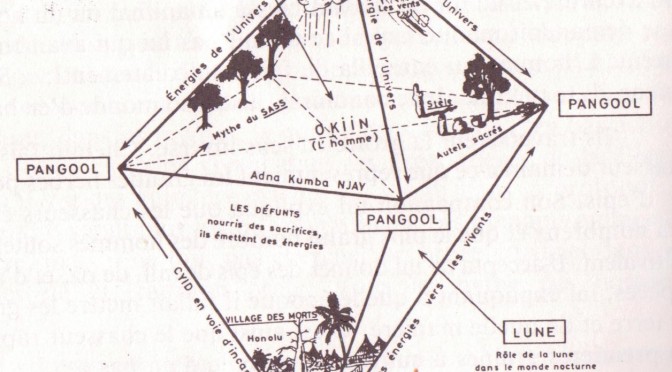


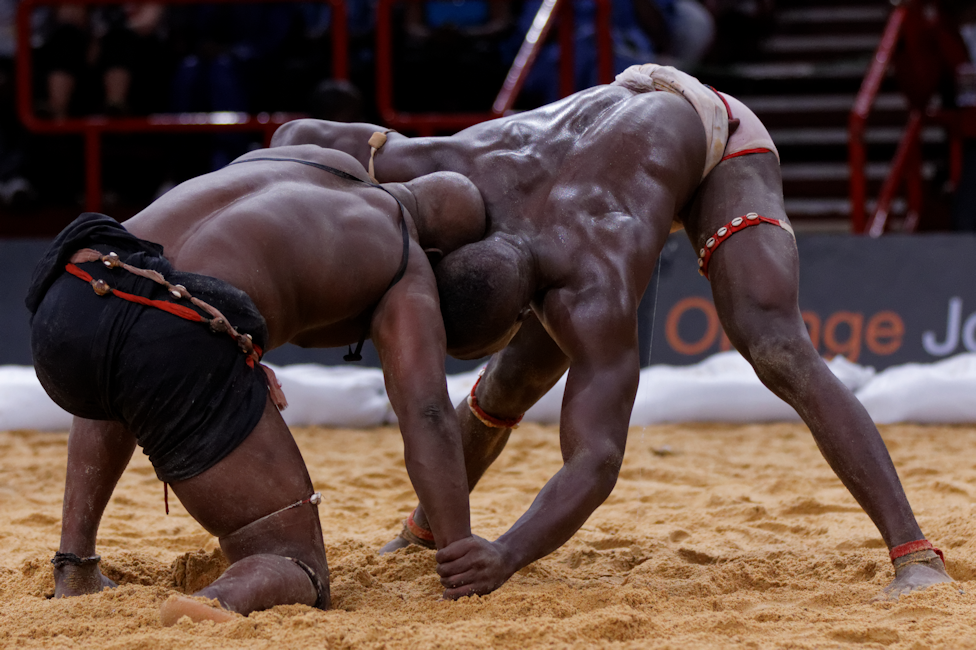

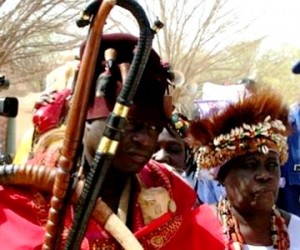
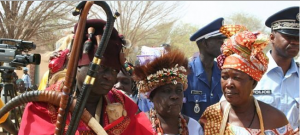





Hi Jeremy:
I’m a novelist and am doing a bunch of research on the Serer for this book I’m working on. I wondered what your sources were for this post. I’m having a hell of a time finding stuff in English, especially about Serer cosmology. Your post here has way more info than I’ve been able to gather thus far. Wondered where it came from so I might use those sources too. (Maybe you’re fluent in French?)
Best wishes,
Christian
I hate to say this because I remember being stuck in the same position, but I don’t have anything that would be helpful to you. Like you, I found that English sources were generally hard to find and when I could find them it was in scattered scraps. I did often find references or citations to other sources, but given time constraints I left anything that required too much digging to either another day or another creator. And, because what I did find was so scattered or incomplete, it never occured to me to save my sources. At the time I was focused on bringing awareness to the fact these religions existed and hoped that maybe someone who had more time to devote to it could find better sources than I could.
Finding sources in English for some of these religions was a challenge and generally when I did find information it required extensive cross-referencing. A lot of these figures, concepts, and ideas actually don’t get full books or even full chapters dedicated to them and instead I would end up finding them in isolated pages of books covering a more generalized topic like ALL of the creation myths/gods/folk heroes of a specific country or region. In fact, on more than one occasion I would find little more than a sentence devoted to what I was looking for. The names of specific gods tend to be helpful in finding more extensive material because usually the gods themselves will get more space devoted to them, but even then it can be a bit of a slog.
So I’m sorry to disappoint, but unfortunately what I’ve posted here is the extent of what I had at the time I first did it. I never got the impression it would be impossible to get a clearer picture, but it is definitely going to be a challenge. The region has a rich culture, but often it gets overlooked or lumped together with other cultures here in the English speaking world. I wish I could do more, and I hope you succeed, but unfortunately I wouldn’t know where to point you for comprehensive sources.
Best of luck,
Jeremy
I, too, am researching for a novel based mostly in Senegal with the Serer religion. The Wikipedia article on the Serer Creation Myth has numerous sources at the bottom. The article itself was poorly written. It is way too long for the subject matter and that is because s/he keeps repeating himself. I am studying the article, but will also study this article by Jeremy. It is a lot clearer.
(The book is going to be “Mysteries of the Empire with Klaudius and Hektor.” The brothers were kicked out of Rome so go on a search for their uncle who owns a gold mine. The farthest north one I could find [other than Egypt] was Senegal. The village chief takes them in but is always having to run interference when they offend one of the local customs. In the mean time, the villagers just aren’t sure who these strange white men are — new gods perhaps — so test them by asking them to solve a village crime spree. Surprise ending, of course. The next book they will be somewhere else. But, as they make an escape through the Sahara, they pick up two camels who take leaps onto a ship about to leave. From then on in future books, whether they go to Britannia, Germanica or wherever, “Where we go, our camels go.”)
Anyway, even if it is a novel, the history and culture must be accurate. Thanks, Jeremy.
Jeremy, do families have totems? Are they of the animal that protected their ancestors? Where do they put them? (Or where did they used to put them when their grandparents believed in totems?)
Take what I’m about to say with a grain of salt because I am not as versed in Serer as I would like to be. It’s been a while since I got to look into their religion and I’m sad to say that I haven’t had a chance to go back to some of these mythologies in a while. So verify everything I say here with an academic source if possible, but this is how I remember it and I hope it gives you a good starting point.
From what I recall, any ancestral spirit or protective entity would fall into the category of the Pangool as mentioned above. Generally Pangool are broader in scope than a single family and they’re attached to a sacred location like a tree, pond, tomb or something else that sits in a fixed location (sometimes even a whole village). This is especially true for the non-human Pangool because those were usually forces of nature or specific entities and that meant that almost everyone knew their names and where to find them. Though there were personal Pangool, most cases of personal Pangool involved the spirit making themselves known to the individual of their own accord. Also, since communing with the Pangool required the help of a Saltigue, you generally had to go to them for the rituals anyway. So, as far as I am aware, there were no ritualistic items in anyone’s home.
I would try to find materials on the Saltigue and their rituals because they were at the heart of how people communed with these spirits. I wish I had more to give you, but I hope this gave you a good idea of where to look. Good luck with your work and I wish you all the best!